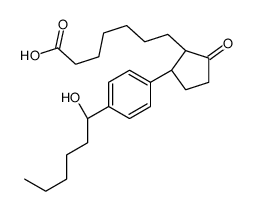Morphological changes in the anterior eye segment after long-term treatment with different receptor selective prostaglandin agonists and a prostamide.
Markus Richter, Achim H-P Krauss, David F Woodward, Elke Lütjen-Drecoll
文献索引:Invest. Ophthalmol. Vis. Sci. 44(10) , 4419-26, (2003)
全文:HTML全文
摘要
To investigate long-term changes in the anterior segment of primate eyes treated for one year with different prostaglandin agonists and a prostamide. The results were compared with those obtained after vehicle treatment and in untreated controls.Sixteen young cynomolgus monkeys were unilaterally topically treated for 1 year with either bimatoprost 0.03% (prostamide), sulprostone 0.03% (EP(3)/EP(1) agonist), AH13205 0.1% (EP(2) agonist), or latanoprost 0.005% (FP agonist), which all lower IOP in this species at the doses applied. Four animals were treated with the vehicle only. In all cases the left eye was treated, the right eye remained untreated. Six monkeys served as untreated controls. Sections from 4 quadrants each of the circumference of the eyes of 16 drug-treated, 4 vehicle-treated and 6 untreated control animals were investigated qualitatively and quantitatively using light- and electronmicroscopy. The area of widened spaces between ciliary muscle bundles, the number of nerve fiber bundles at the muscle tips, and the width and length of the ciliary muscle were quantitated.The general morphology of the ciliary muscle and trabecular meshwork was normal in appearance and shape in all animals, whereas some localized morphologic changes were observed in the drug-treated animals. The changes were found to be similar in all four treatment groups. In the ciliary muscle, there was a significant increase in optically empty spaces between muscle bundles in the anterior portion of the longitudinal and the reticular ciliary muscle compared with untreated and vehicle-treated control animals. Within these spaces, significantly more myelinated nerve fiber bundles were found in drug-treated compared with normal control animals. Ultrastructurally the spaces were partly covered by endothelial-like cells which, in some areas, were in contact with the basement membrane of the microvasculature. In all treatment groups, there were also changes in the trabecular meshwork region. Significant regional differences among the different quadrants of the eyes and quantitative differences between treatment groups were observed. The ciliary epithelium had a normal appearance in all treatment groups.After one year of treatment with different prostaglandins and a prostamide, uveoscleral outflow pathways are enlarged and appear organized. Conventional outflow routes were also affected. Long-term treatment with AH13205, latanoprost, sulprostone, or bimatoprost also induces sprouting of nerve fibers.
相关化合物
| 结构式 | 名称/CAS号 | 分子式 | 全部文献 |
|---|---|---|---|
 |
AH13205
CAS:148436-63-9 |
C24H36O4 |
|
New reagent system for attaining high regio- and stereoselec...
2005-01-20 [Org. Lett. 7(2) , 183-6, (2005)] |
|
Phospholipase A2 inhibitors protect against prion and Abeta ...
2010-01-01 [Molecular Neurodegeneration 5 , 13, (2010)] |
|
EP4 receptor as a new target for bronchodilator therapy.
2011-12-01 [Thorax 66(12) , 1029-35, (2011)] |
|
Stimulation of cannabinoid (CB1) and prostanoid (EP2) recept...
2005-05-01 [Exp. Eye Res. 80(5) , 697-708, (2005)] |
|
Cobalt(diamine)-catalyzed cross-coupling reaction of alkyl h...
2006-02-15 [J. Am. Chem. Soc. 128(6) , 1886-9, (2006)] |